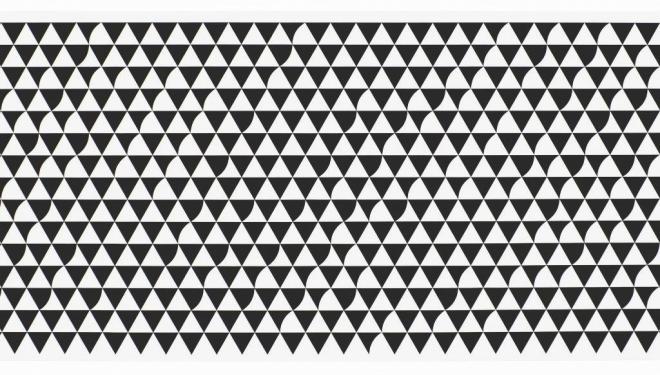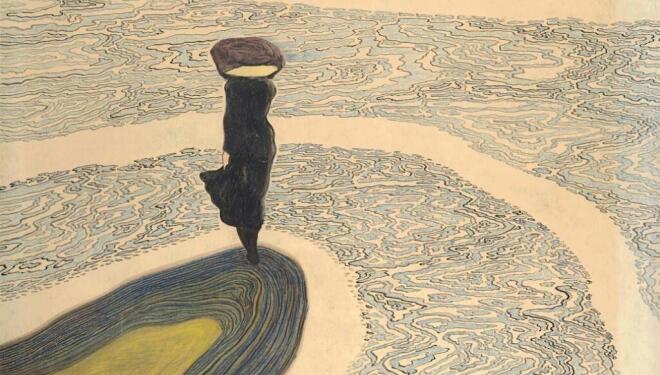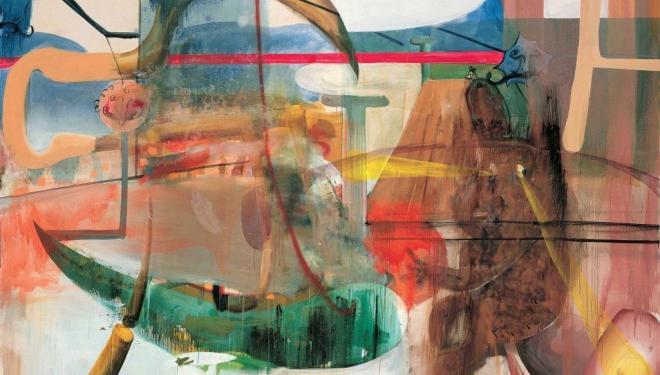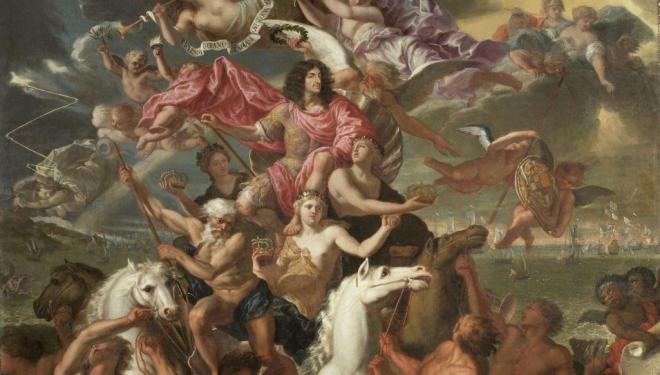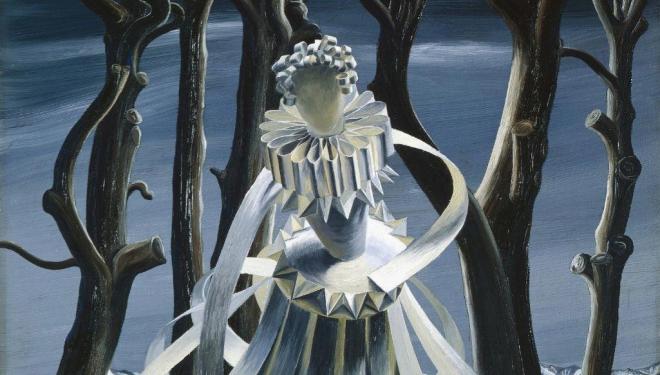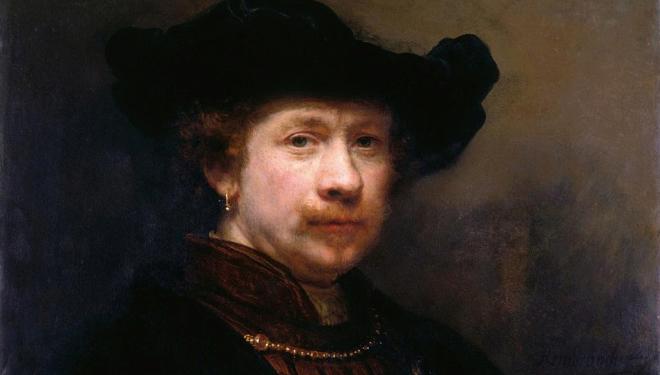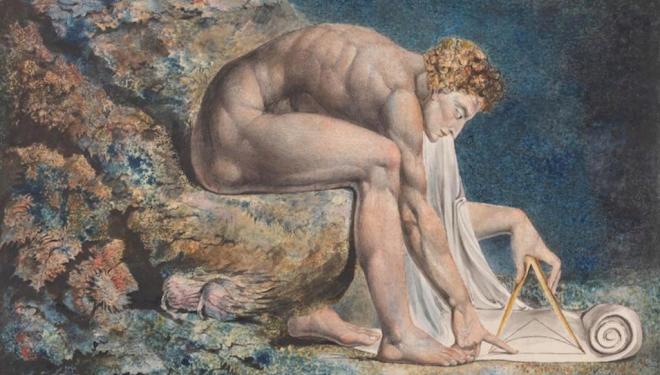
Blake was a staunch critic of empire. He supported the French Revolution and saw the American War of Independence as a heroic endeavour, an attempt to overthrow the old, oppressive order. He believed in free love and the sexual equality of women and was anti slavery. But because he also claimed, from a very early age, to see visions of angels, devils and prophets, contemporaries debated whether he was afflicted with a psychological illness.
When you enter the huge exhibition dedicated to Blake at Tate Britain, which has been dimly lit to preserve the delicate works, you will be greeted by one of the artist's most iconic images. Albion Rose depicts a young man with out-stretched arms standing on a rocky base, rays of colour emanating from his torso. It is the perfect introduction to Blake's oeuvre, a work simple in its composition, characteristically Blake in its design, and open to myriad of interpretations. This image of the muscular, rosy-cheeked youth, inspired by the frescoes of Michelangelo and the draftsmanship of Raphael, was replicated throughout the artist's career. The statues of the ancient world would permeate these images, too; there are Classical Profiles and furrowed Hellenistic brows aplenty.
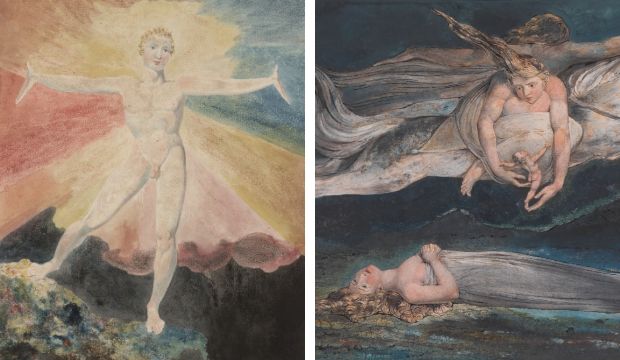
Left: William Blake. Albion Rose c.1793. Courtesy of the Huntington Art Collections. Right: William Blake. Pity c.1795. Tate
But far from aping the works of the greats, Blake was proving himself to be an innovator, both artistically and technically. Around 1788, he invented a new form of printing in colour, which combined text and image, although the exact method he used remains a mystery. With this new technique he printed books that grappled with the most pressing questions of the day, with politics, religion and morality, but they were not widely distributed, and were so heavily laden with symbolism that few readers would have grasped their radical sentiments. This might have been a blessing in disguise, ensuring that Blake and his anti-establishment views remained unnoticed by the authorities.
Throughout his career, Blake relied on the support of others and this exhibition makes a point of acknowledging his wife’s contribution. Catherine Blake met her husband-to-be when she was 19 and stayed with him for the rest of his life. It was Catherine who helped Blake make prints, grind pigments and colour works. But Blake's friends were also instrumental in keeping the couple from starving, although the artist sometimes found their input suffocating. And, later in life, and despite his lack of commercial success, he attracted a following of younger artists, who reinvigorated him in his work. Among them were the romantic painter Samuel Palmer and the artist John Linnell. Linnell's candid portrait of the artist-poet on Hampstead Heath captures the wide-eyed stare that became a trademark of Blake the myth.
There is much to take in here. Seen in person, and close to, these images are rewarding. The detail in the miniatures is exquisite, and the textures of the page cannot be appreciated in reproduction. There are 300 works in total, and with them the curators tell the story of a man of intense imagination, battling the realities of being an artist in a commercial, and somewhat superficial, world. Spend as much time as you can in these galleries; read the poetry and drink in the colours. In fact, spend an afternoon in this exhibition. It would be an afternoon well spent.
| What | William Blake exhibition, Tate Britain review |
| Where | Tate Britain, Millbank, London, SW1P 4RG | MAP |
| Nearest tube | Pimlico (underground) |
| When |
11 Sep 19 – 02 Feb 20, 10:00 AM – 6:00 PM |
| Price | £18 |
| Website | Click here for more information |
.jpg)
